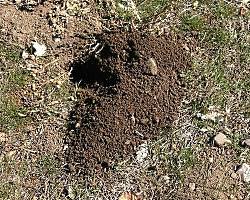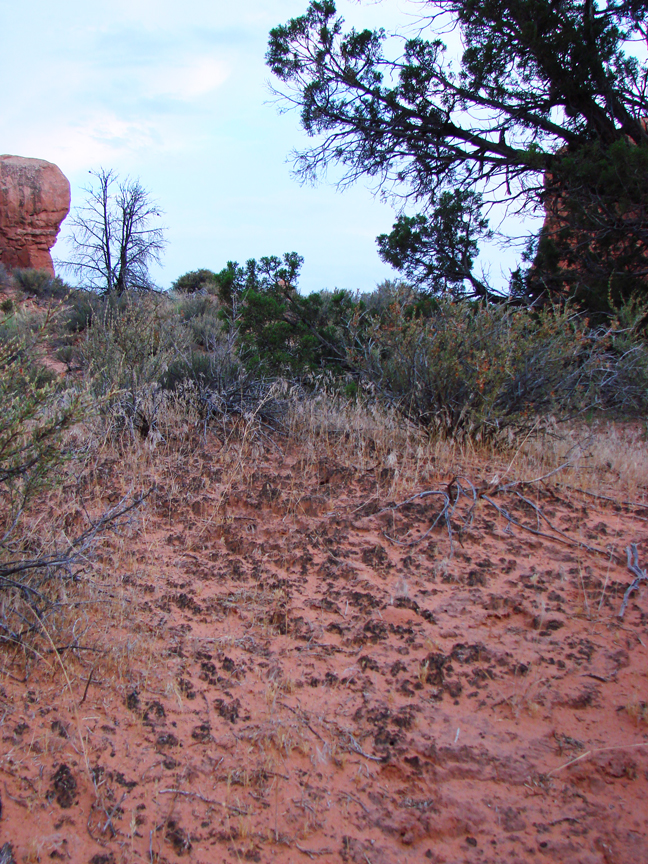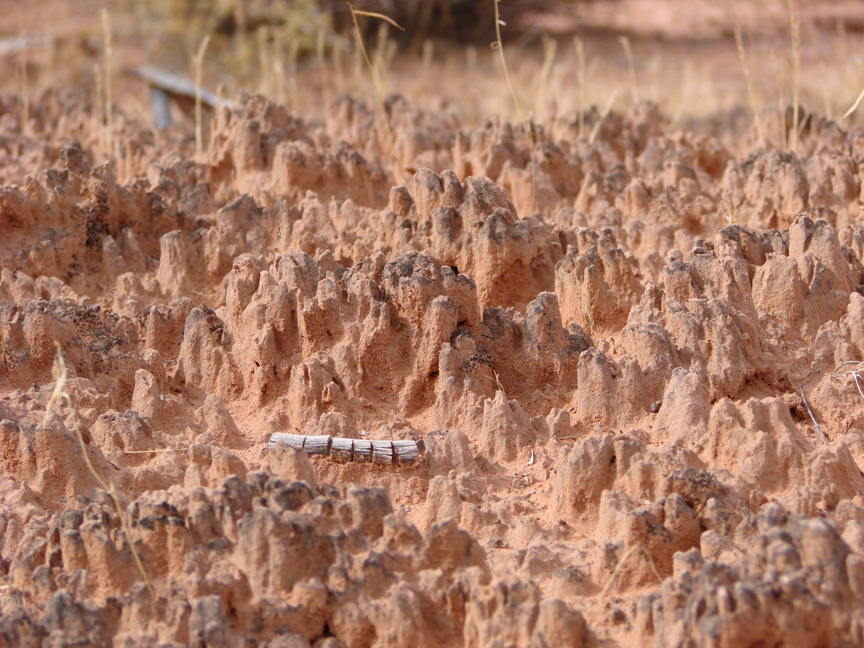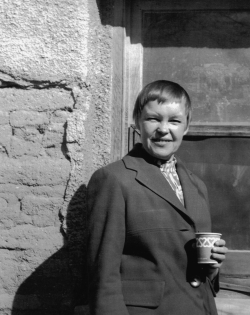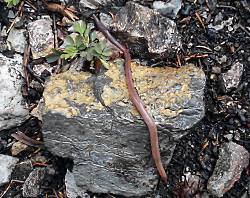
Lumbricus terrestris
Copyright 2013
Andrea Liberatore, Photographer
 Red Garbage Eating Earthworm
Red Garbage Eating Earthworm
Eisenia foetida
Copyright 2013
Andrea Liberatore, Photographer
 A child shows others the worm
A child shows others the worm
she found while helping plant the
pollinator garden at the FWS National
Conservation Training Center Garden
Courtesy FWS
Cara Schildtknecht, Photographer
As we enter into May, the familiar old rhyme of ‘April showers bring May flowers’ is proving to be true. But April showers always seem to bring something else out worth noticing – earthworms! A walk in the neighborhood the morning after a spring rainstorm reveals pink, wiggling – or sometimes not wiggling – worms on the sidewalks, streets, and lawns. This behavior obviously makes the robins happy, but I can’t imagine it’s all that good for the worms themselves. So what’s going on?
While worms need to be moist at all times, it turns out that they can’t handle too much water. Worms have no lungs, and instead breathe directly through their skin. A little bit of moisture facilitates the exchange of air into and out of their bodies, but too much moisture inhibits this process, essentially suffocating them. Another hypothesis suggests that worms might take advantage of the moist environment to travel. When the air is dry, worms are restricted to underground movement, which takes considerable time and effort. After a spring rain, however, they can travel across the surface, moving faster than they otherwise would.
Not all earthworms are alike – there are upwards of 7,000 known species and counting. They can range in size from less than an inch to over six feet long, and are distinguished by size, body shape, color, and many other minute differences. For simplicity’s sake, worms can be divided into three broad categories based on where they are found in the ground. The first group – called the Epigenic species – are found very close to the surface of the soil, typically in the leaflitter layer. These are the worms used for vermicomposting because they rapidly break down large volumes of organic matter. The second group – the Endogenic species – are found in the upper soil levels and do not have permanent burrows. They are constantly moving, eating all the while and filling up their burrows with their waste – called worm castings – as they go. Lastly, there are the deep burrowing Anecic species, which contains the familiar nightcrawler. Anecic species create more permanent burrow systems that can be quite extensive and stretch several feet deep. They frequently visit the soil surface to locate and pull organic matter down below, leaving little piles of castings at the burrow entrance.
Contrary to popular belief, earthworms don’t in fact eat dirt, or even dead and decaying matter. Instead, they feed on the bacteria and fungi that live on the dead and decaying matter, breaking that stuff into smaller pieces in the process. This, of course, greatly aids decomposition, making new nutrients available to plants. In fact, worms are of great assistance to the average gardener. As they move through the soil in search of food, they increase the porosity of the ground which allows rainwater to seep in and stay there longer. Worms are constantly on the move – carrying nutrients from the surface down into the lower layers of the soil and vice versa as they go, all the while providing channels for plant roots to easily follow.
Any search for earthworm information uncovers a litany of amazing facts. Earthworms have five hearts. They are hermaphrodites – meaning they have both male and female characteristics. In one acre of productive land, there can be as many as one million earthworms. And perhaps strangest of all – the abundant earthworm is not native to any part of North America once covered by glaciers. But there is one common wives’ tale that is too good to be true. If you cut an earthworm in half, it will not create two worms. While worms can regrow parts of their bodies, a headless worm segment cannot grow a new head. If the damage is not too extensive, however, the tailless worm can grow a new tail. So be kind to the worms wiggling out onto your sidewalk after a hard rain. If you’re feeling extra generous, you might even relocate a few to a stretch of lawn or garden – perhaps saving them from the watchful eye of the ever-present robins.
For pictures of worms and a lesson plan on making mini worm habitats, visit www.wildaboututah.org.
For the Stokes Nature Center and Wild About Utah, this is Andrea Liberatore.
Credits:
Photos: Courtesy & © Andrea Liberatore
Text: Andrea Liberatore, Stokes Nature Center, logannature.org
Additional Reading:
Appelhof, Mary (1997) Worms Eat My Garbage. Flower Press. Kalamazoo, MI https://www.amazon.com/Worms-Eat-My-Garbage-Composting/dp/0977804518
Edwards, Clive A. Soil Biology. Chapter 8: Earthworms. A publication of the United States Department of Agriculture. Available online at: https://soils.usda.gov/sqi/concepts/soil_biology/earthworms.html
Ransford, Matt (2008) Science of the Everyday: Why Earthworms Surface. Popular Science. Available online at: https://www.popsci.com/scitech/article/2008-03/science-everyday-why-earthworms-surface
Utah LessonPlans (2007) Making a Mini Worm Habitat. Utah State Office of Education. Available online at: https://www.uen.org/Lessonplan/preview.cgi?LPid=18886
Sullivan, Kaitlin, Invasive ‘Jumping’ Worms Are Now Tearing Through Midwestern Forests, Audubon Magazine, January 2, 2020, https://www.audubon.org/news/invasive-jumping-worms-are-now-tearing-through-midwestern-forests
Weston, Phoebe, ‘A poor man’s rainforest’: why we need to stop treating soil like dirt, The Guardian, April 16, 2021, https://www.theguardian.com/environment/2021/apr/16/poor-mans-rainforest-stop-treating-soil-like-dirt-aoe


